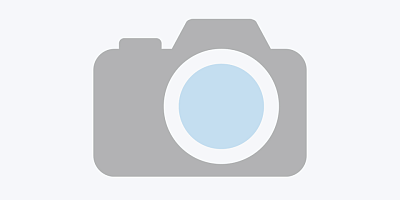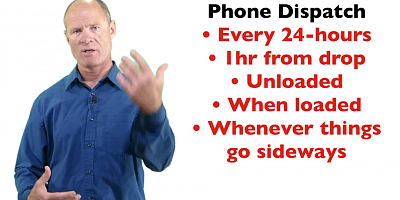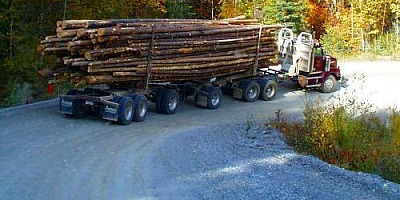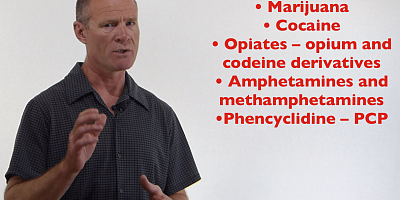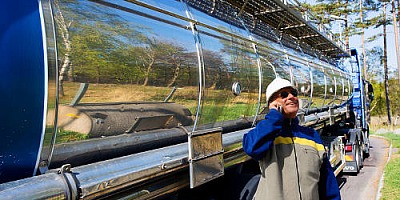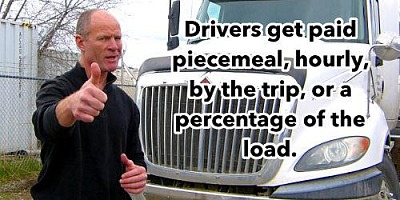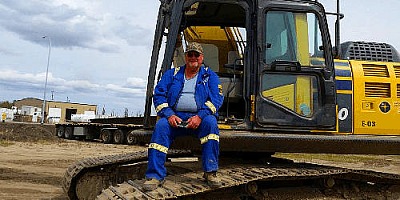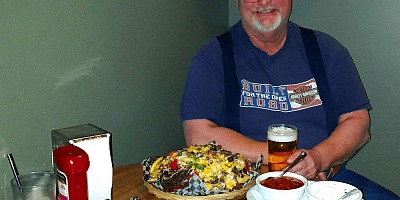Improve you job finding skills! Learn about the cover letter & resume here.
Truck Driving Jobs | Resume & Cover Letter
|
At the outset of your truck or bus driving career, you'll have to work at whatever job you can get
|
Introduction
Learn how to fill out a job application and complete your resume and cover letter.
For many new drivers who graduate right at a truck driving school, the age old adage of:
"you can't get a job without experience, and you can get experience without a job."
Today we're going to talk to you a little bit about how to go about finding a job.
More so about your resume and cover letter, which indicate that you can do paperwork, as I shown you in other videos.
We'll be right back to talk to you about that.
Finding a Job
Talking about the information for you to find a job as a professional dirver.
If you're fresh out a truck driving school and you don't have a lot of experience, beg, borrow, steal.
Just keep looking for work - take any work that you can get to drive a truck, whether it's driving a dump truck for a couple of weeks; whether it's working for a broker; whether it's driving an old piece of junk on the farm.
Whatever you can do to get that four, five, six months experience.
Because once you get six months experience, it makes it a lot easier to find a job.
Now the other people that you might want to look at: there's lots of trucking companies around that will hire new drivers.
The other people that will hire new drivers are brokers, and brokers are owner-operators.
These are people who own their own trucks and contract them to a company.
Those are other people that will hire new drivers as well.
So have a look at them and try to find the brokers and people who own trucks - one or two trucks.
Sometimes they will give you a break as well, especially if you show them that you're motivated - you're willing to learn; and you're willing to ask lots of questions.
 The Resume
The Resume
First thing - the resume.
As you can see here this is a sample resume that I have about finding a job.
Resumes have changed a little bit and really when you submit your resume, particularly if it's a job that is advertised you really don't want to end up in the slush pile.
Because if you end up in that stack of resumes that somebody has been tasked with the job of going through.
You're really not going to get a chance to impress the people who are looking at resumes because they really only to spend twenty or thirty seconds looking at resumes and then they're going to move on to the next one.
One Page Resume
So you really want to have it one page.
You don't have more than one page because anybody looking at resumes is not going look at more than one page.
So one page and try and maximize the real estate on the page: lots of white space, lots of texts as you can see here in the sample here.
One Line Contact Details
The first way to maximize your real estate is - lots of people up here at the top, you can see the address.
Lots people put it on three or four lines vertically.
Instead of putting it on a three or four lines vertically, put it on one small line all the way across, as you can see here in the sample.
That will save you a lot of real estate.
Now just for formatting, and you know the way that it looks nice on my resume here is, I put a horizontal line through there.
Transferable Skills
The next section that you're going to have on your resume is "Summary of Qualifications."
And saying summary of qualifications, yes you don't have a lot of experience because you just came out of a truck driving school - you still have other experience in life, even if you're 19 or 20 years old and you're looking for a job.
You worked at McDonald's, you delivered newspapers, you cut the neighbours grass.
All of those are transferable skills.
If you got some sort of hobby that you do - you build model airplanes - all of that has some sort of skill in it that is a transferable skills that you can put here in summary of qualifications.
Because the driving the truck part, they can teach you that part, but time management, customer service, route planning, they can't teach you that stuff, but if you got some other skills - you know - assistant manager at McDonalds, well you got some time management skills there and some ability to plan, and do project management.
And all of that is relevant to truck driver.
So think about your transferable skills.
There are lots of employment agencies in and around the communities where you live.
Go to those employment agencies, talk to the employment counsellors and get them to help you with your transferable skills that you can put in.
Because as I said, the driving the actual truck is only one small part of the bigger part of actually getting a job as a truck driver.
Dates on the Right
The other thing about the resume is down here on the left side you can see that that is your power strip.
That is where the eye is going to go first.
We read left to right.
So leave that for your power strip: your dates are not very important, so put them over on the right.
That way if who ever is looking at your resume are interested when the dates are, they will look at them.
But that's not really the important information.
Work History
So after your summary of qualifications, the next section on your resume is going to be your work history.
Don't put a lot of detail in terms your work history, as you can see here on my resume, its just a job title and the name of the company of whom I worked for.
And you can see the dates over on the right side.
So very brief for the work history.
And remember, only the relevant work history that's relevant to the job that you are applying for.
Education & Certifications
Down at the bottom, put your education - any certifications that are applicable: if you have first aid, H2S alive, you took a defensive driving course.
All of that stuff is relevant for certifications and education down at the bottom.
And then finally, if hobbies are relevant.
For example, you are mechanically inclined and on the weekend you have your car in the driveway, and you tear it down and you're rebuilding the engine in it in your driveway that is an inapplicable skill because you're mechanically inclined and can fix things.
So that's relevant to your resume in conjunction with your resume, always submit a cover letter.
Especially if you are applying for a job that has been advertised, always put a cover letter into it.
Again, go to the employment agency have them help you with the cover letter.
Cover Letter
The cover letter, as you can see here on the example of mine, is that the address at the top matches the resume.
So use that as your header, use it as your address.
That way your maximizing the real estate on your cover letter.
At the top as well, put the date, the name of the person, and the job title.
If you don't have the name of the person and job title, call the company, talk to the administrative assistants - be very nice to them and get the name and the job title of the person who's actually doing the hiring or the person who's responsible for going through resumes.
And make sure you get the correct spelling of the person's name.
There's nothing that really annoys people more than if you misspell their name.
Particularly in a job application.
It kind of indicates a little bit that you're not really paying attention to detail.
So job title, person's name, the address of the company and then the salutation: "dear whomever." If it's a woman, there used to - you know some years ago - there was Mrs., Miss.
& Ms.
- we don't do that anymore: just Ms.
and the last name or Mr.
OK.
First Paragraph - Cover Letter
First paragraph on the cover letter — I am applying for such and such a job as a truck driver running flat deck I learned of the position - where you learned of the position - whether it was a job posting, it was in the newspaper, it was on the internet - which internet site.
If it was on the internet.
It's just helpful for the company to know where they're spending their advertising dollars.
Second Paragraph - Cover Letter
Second paragraph on the cover letter is about you and the relevant skills that you bring to the company.
Now don't list everything on your resume, don't list everything in your cover letter - you just want enough to get their interest so they invite you in for an interview.
If they want to know more details about your cover letter or your resume they'll ask you in an interview.
First Paragraph - Cover Letter
Third paragraph is about them.
You want to show the people hiring that you know about the company to which you're applying.
You wanna know that they have three dump trucks and three pups.
And that's what you're applying for or they're a huge trucking company like Bison or Challenger that is a national company that runs internationally in Canada and both in the United States.
And most of this information about that company you can pull right off their website word-for-word.
Just pull it out sentence for sentence and plop it in there...
and you know make it look nice and sound kinda plausible right.
So fix it up - don't pull it off verbatim - but you know you can get the general ideas in for that third paragraph.
 Last Paragraph - Cover Letter
Last Paragraph - Cover Letter
The last paragraph - so there's four paragraphs on your cover letter.
The last paragraph on the cover letter is thanking him or her for their time and energy and looking at your application and considering you for a position with their company.
And being very specific about how they can contact you for an interview.
For further information I can be contacted at the above address - the address that you have on the top of your cover letter - at the phone number that you've provided, or the email address.
Keep Your Cell Phone On & Answer It!
Now on that note, if they can contact you - in this day in age technology has changed us a little bit.
We all have cellphones.
Even I have a cell phone!
Make sure you keep your cell phone on if they're going to call you and you were expecting them to call you for a job interview.
Because if you don't pick up the phone, you don't talk to them right away, they're just gonna move on to the next person on their list.
So make sure your cell phone keep yourself on.
Finally, at the end: "Sincerely Yours" salutation and then enclosures.
If you have your resume, its gonna be one enclosure.
If you have your resume and two or three certificates, it'll be all of those.
Send Electronically as a PDF
However whatever that total is for the number of enclosure.
So make sure you sign it or send it off electronically.
Now sending them off electronically - make sure you convert them into PDFs [Portable Document Format].
OK, that way they're not going to change on you as a Word document or these other types of things.
If you send them off to other computers, sometimes the formatting gets weird and whatnot.
So always send them off as a PDF.
References - 'Give Them a Heads UP'!
One other note that I want to make, if you list references, make sure you call your references and tell them that you applied for a company and that the company may be calling them.
The other thing about your references - make sure you send them a copy of your resume so that they can see and look at what your skills are because the people who are your references may not really know you that well but they've offered to be a reference for you.
Send them a copy of your cover letter and resume and tell them that they might get a call.
that way they're not like...
ummm who? John...John Smi? Oh I know John...
So make sure you give them a heads up.
Conclusion
In conclusion, application for a job as a truck driver.
Unfortunately you're up against the old adage, "if you don't have experience you can get a job, you can't get a job if you don't have experience, especially if you're fresh out of truck driving school.
There are lots of companies around who will hire new drivers and train them.
And there are some very good mentoring programs for some of the bigger companies-Bison, Schneider National out of the United States - these companies have big mentoring programs and hire new drivers.
Brokers, other companies - just be tenacious.
Bang on as many doors as you can; Submit as many applications as you can - as many resumes and whatnot.
So resume, quickly - maximize the real estate space on your resume.
One line for the address, dates on the right of the page, the left side of the page is your power column.
The first section is summary of qualifications - don't negate your transferable skills.
Next section is your work history and for your work history don't put any detail in about what you did at the place that you worked at, rather just the name of the company and your position at that company and the date on the right side of the page that you worked for.
Third one is your education - any certifications that you have.
Lastly any hobbies that may be relevant to the job to which you are applying.
Cover letter - make sure you have a cover letter, particularly if you're applying to a job that's been advertised.
The top of the cover letter will match the top of your resume.
First paragraph on the cover letter: the job you're applying for; where you found the posting - where you learned about the job.
Second paragraph is about you.
Third paragraph is about the company and you can learn most of that off their website.
Last paragraph: thanking them for their time and energy in considering you for a position with their company and how they can contact you by email, phone number, address - keep your cell phone on so they get a hold you because unfortunately.
If you don't pick up the phone when they call you they're going to move on to the next person.
References - send him a copy of your resume & your cover letter and give him a heads up that they might get a phone call.
You don't need to put on your resume, "references available upon request."
They know that.
If they want your references, usually they're going to request them after an interview, if they request them at all.
If they do request them, well you can give them a list at that point.

